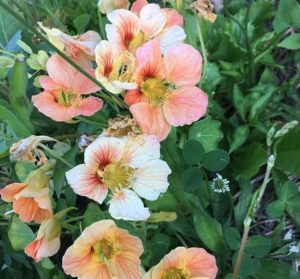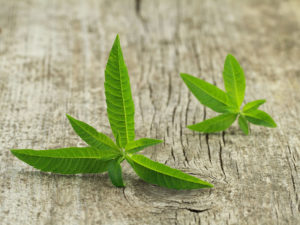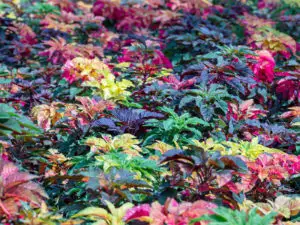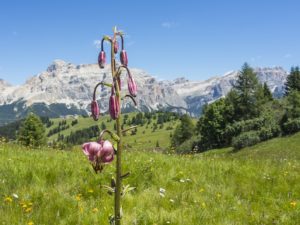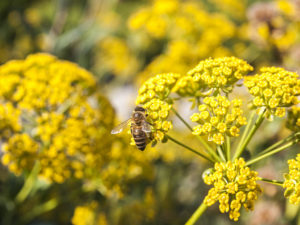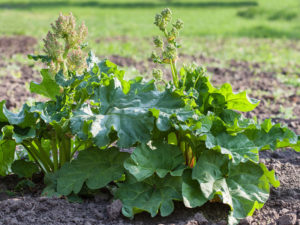The Red Salvia is native to Brazil and Mexico and is also found in the Southeastern US, Central America, and northwestern South America.
Its scientific name is Salvia Splendens and it thrives in hardy zones 9 and 10, easily grown as an annual in cooler climates.
The Red Salvia flowers are eye-catching that form the perfect bedding or plants or hedges.
Homeowners use them in container gardens, where they serve as a vertical accent.
It is a garden favorite that enhances the beauty of your yard during the summer and early fall, depending on the location and plant care.
Although it is officially known as Scarlet Sage, people prefer to call it Red Salvia.
Members of the mint family and technically a perennial plant, the Red Salvia is commonly grown as an annual in temperate zones.
While the red variety is the best-known one, Salvia splendens also come in colors such as pink, purple, white, salmon, lavender, burgundy, and orange.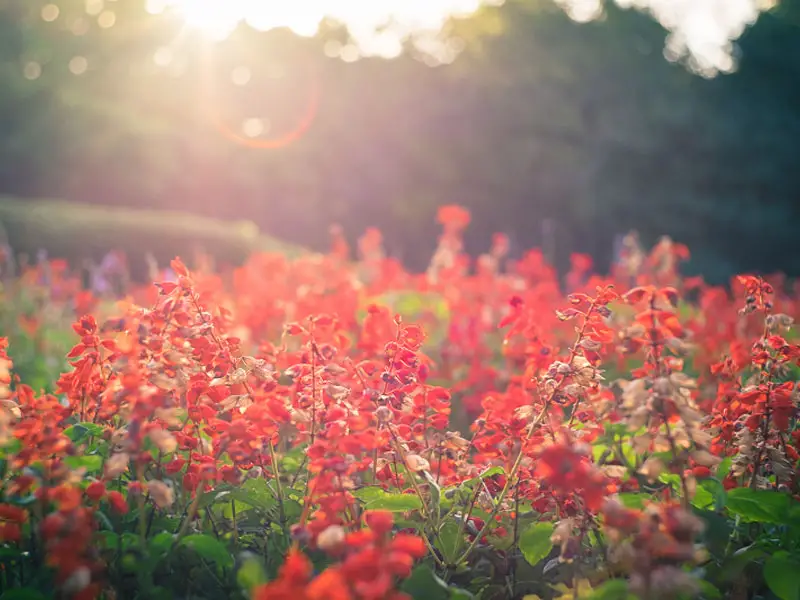
Red Salvia Plant Information
| Scientific Name | Salvia Splendens |
| Common Names | Red Salvia, Scarlet Sage, Blood Sage |
| Hardiness | USDA 10–11 |
| Indoor or Outdoor Plant? | Both |
| Sun Exposure | Full sun to partial shade |
| Water | Regular watering |
| Size | 1–2 feet tall, 9–18 inches wide |
| Soil Type | Moist but well-drained |
| Soil pH | Neutral to acidic |
| Flower | Red |
| Growing Difficulty Level | Average |
Red Salvia Appearance and Characteristics
The Red Salvia is mainly grown as garden ornamentals.
At first glance, it looks like a vase-shaped upright subshrub, which is one reason that makes it attractive.
The small red clusters thrive quickly and spread far, making a good bedding plant in colder areas where it is not hardy.
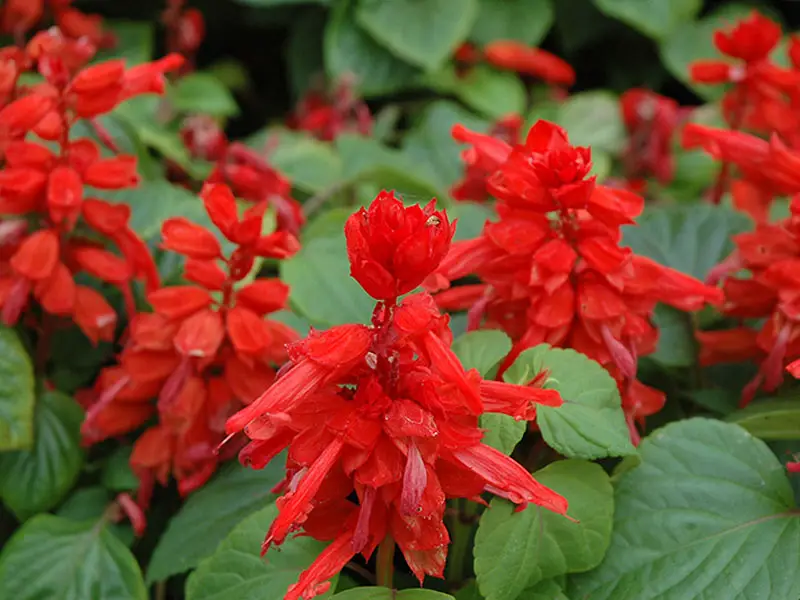
How Tall do Red Salvias Grow?
These 2-4 feet tall plants spread up to 2 ½ feet wide.
The leaves are a shade of medium green, hairy, roughly triangular, and have scalloped edges. While the opposite leaves may vary considerably in size, they have long petioles coming off the square stems.
Its dark-green, heart-shaped leaves emit a fragrance that drives away mammalian pests, making them deer and rabbit resistant.
The stems are an upright, terminal, racemose inflorescence that grows up to 10 inches long.
The flowers are produced in loose whorls vertically on the stem.
The Red Salvia flowers are tubular shaped and emerge from deep red calyxes, present in tall spikes.
This species attracts hummingbirds who regularly show up for a feast, as it is perfectly designed for pollination.
It is ideal for placement in medium to large containers as well as in gardens and landscapes.
Advantages of Growing Red Salvia
Depending on the usage, people often refer to the Red Salvia as Red Sage, which has several proven medicinal uses.
To begin with, you can use fresh leaves to create an extract. You can then infuse these extracts into drinks.
When prepared as Red Sage, Red Salvia has several health benefits.
It contains high nutrients such as vitamins and minerals, such as small amounts of magnesium, zinc, copper, and vitamins A, C, and E.
It also has minimal doses of caffeic acid, chlorogenic acid, rosmarinic acid, ellagic acid, and rutin.
Besides this, it is also loaded with antioxidants since it contains over 160 distinct polyphenols or plant-based chemical compounds.
Its antimicrobial effects can neutralize microbes that promote dental plaque.
It was and is traditionally used to ease menopausal symptoms as well as diabetes.
Red Salvia Plant Care
The Red Salvia is a comparatively easy plant to grow; however, it does require continuous maintenance depending on which area you live in.
Since it thrives in warmer climates, you need to take extra care when growing them in colder areas.
This plant grows very quickly; you will have to constantly replant, prune and propagate the seeds to prevent them from spreading wildly.
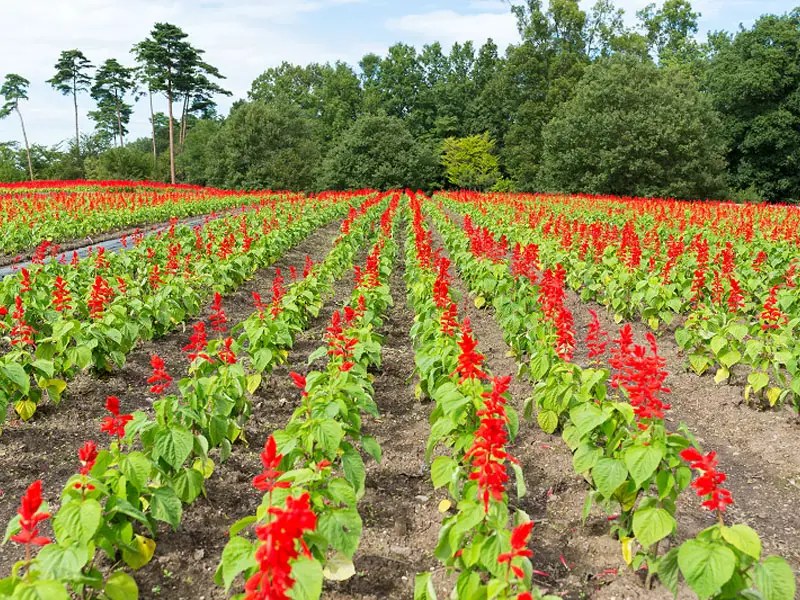
Watering Red Salvia
The Red Salvia thrives best in consistently moist soil. You must be careful of overwatering them as it can cause the roots to rot.
The best action is to prepare a watering schedule every seven to ten days.
This is sufficient for the plant to grow. Depending on the amount of rainfall and hot daytime temperature, you can alter your schedule.
Check whether the first inch or two of soil is dry before watering.
If the soil is dry, then water deeply to ensure that the water reaches the plant roots.
Normally, annuals like the Red Salvia have fairly shallow root systems, meaning that they dry out faster than well-established perennial plants and shrubs like azaleas.
Light for Red Salvia
The Red Salvia successfully grows in areas that receive partial shade.
So you can plant them under shady trees.
If your trees are west-facing, then your plants will thrive underneath.
This plant ultimately grows best and blooms better if it receives longer hours of sunlight.
So you can also plant them in large containers on the porch facing west.
Ensure that your garden beds do not have other larger plants that might prevent the Red Salvia from getting enough light.
If the Salvia gets at least six to eight hours of bright sunlight per day, then you will have a healthy blooming plant.
Soil for Red Salvia
Plant the Red Salvia in moist, well-draining soil.
If you have a loamy mixture that is rich in organic matter but doesn’t get boggy or retain too much water, then it is the best combination for the plant.
You can externally amend nutrient-deficient soil with organic matter before planting.
To retain the moisture, add mulch to the top layer of the soil, especially during the hotter summer months.
Temperature and Humidity for Red Salvia
The Red Salvia plant is fairly temperature-sensitive and prefers to be grown in a consistent soil temperature.
Since it is not frosting tolerant, You must not subject it to temperatures below 32 degrees Fahrenheit.
Although the Red Salvia does not have any special humidity requirements, it grows best in high humidity areas and remains warm throughout the year.
However, in USDA Hardiness Zones 9 – 11, you can grow it as an annual in cooler areas.
Red Salvia Plant in Pots
Use moist to slightly dry soil when you are potting or repotting the Red Salvia plant.
Water them regularly, maybe once or twice per week during the dry season.
Remove weeds or apply a 2-3 inch layer of mulch for a tidy appearance.
Since the Red Salvia is a heavy seeder, place it in an area where it re-seeds easily and return it each year.
You can transplant them from the beds to the pots or containers after the reseeding.
Bring them out or transplant them once the seeding season is over and the plant begins to emerge.
Propagating and Pruning Red Salvia
You should ideally propagate Scarlet Sage Salvia through seeds.
When indoors, sow the seeds in a pot for 6 to 8 weeks before the last frost date of late spring.
The temperature range should be between 72° – 75° degrees Fahrenheit.
Water lightly as the fine seeds can wash away or penetrate too deeply into the soil.
After the last frost date, transform Salvia into the garden beds by spacing them 10-20″ apart.
This allows for more room to grow and show off their bright blooms.
To branch them out better and cut off the tip of each stem, this results in two new stem tips that are produced from the axils.
If you grow the Salvias during the fall, pinch back the stem tips until around June.
Cutting back delays flowering, so you can use this method depending on when you want it to bloom the most.
Prune the woody stems down to the lower set of new leaves. Prune the softer brittle stems to the ground.
Red Salvia Seeds
You can find some of the best quality seeds on Amazon.com by clicking on these links.
Pack of 30 Seeds

100 Scarlet Sage Seeds

Twin pack of Red Salvia Seeds

FAQs
Some commonly asked questions on the Red Salvia are as follows:
Are Red Salvias perennials?
Yes, they are technically perennial but can be grown as an annual plant.
Do they come back every year?
Yes. You can plant them once and expect them to come back every year.
Do Red Salvias require a lot of water?
They require regular watering but do not overwater them.


